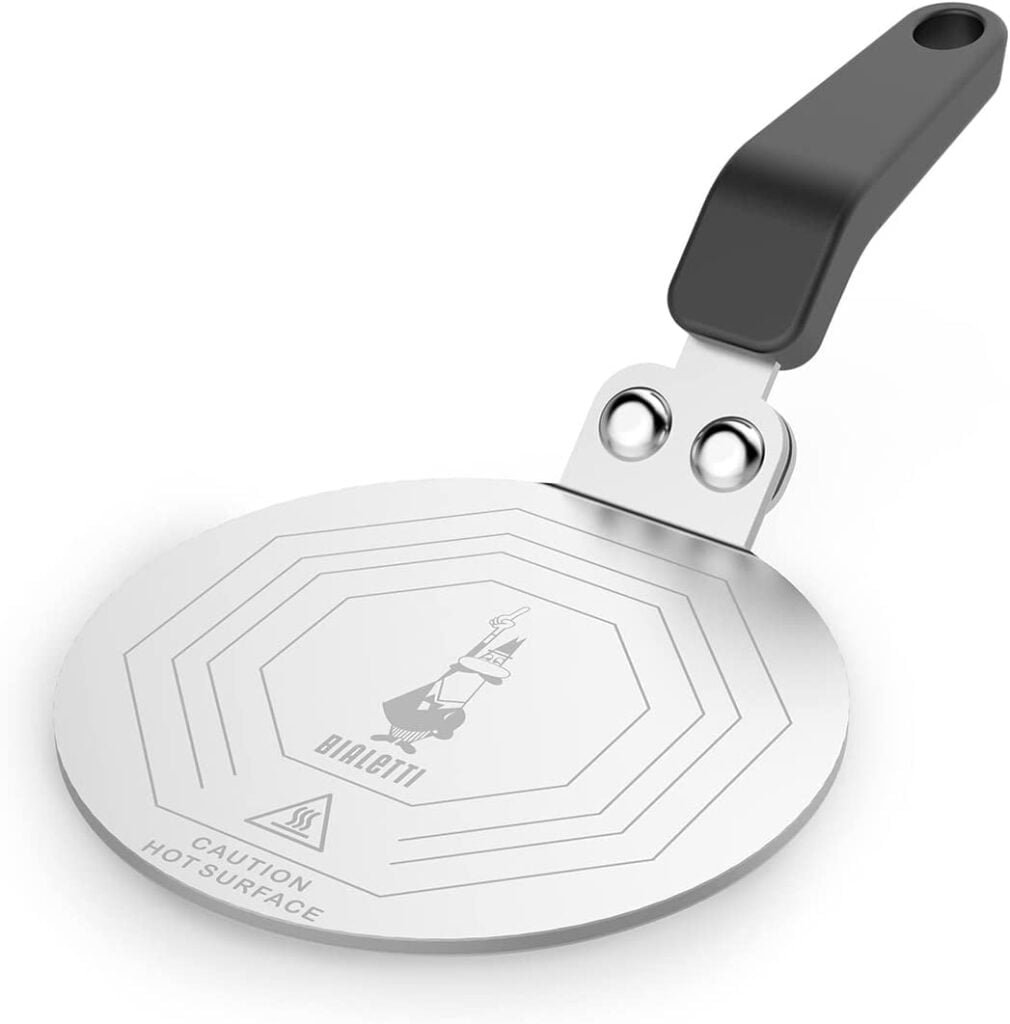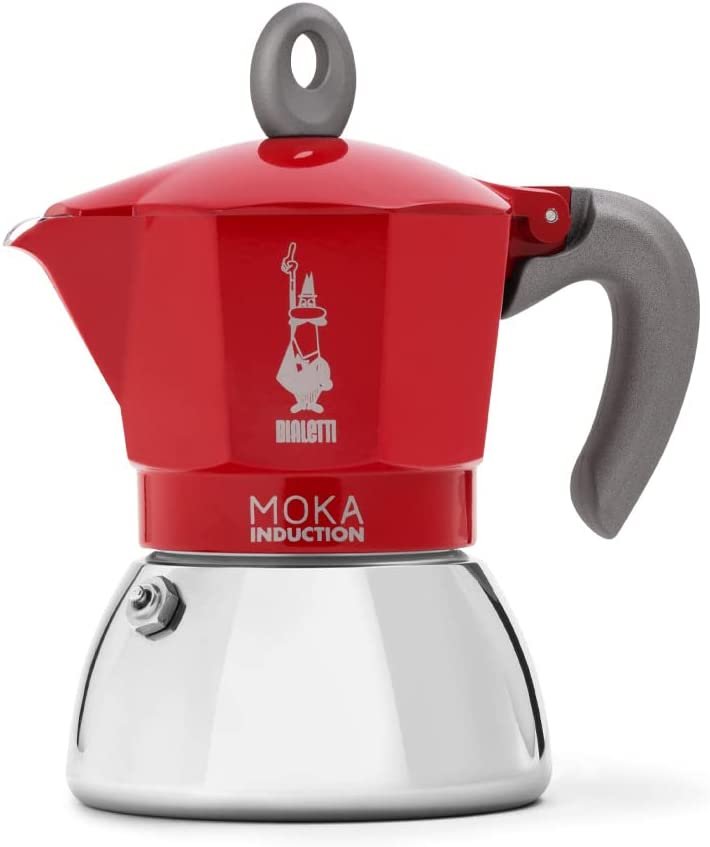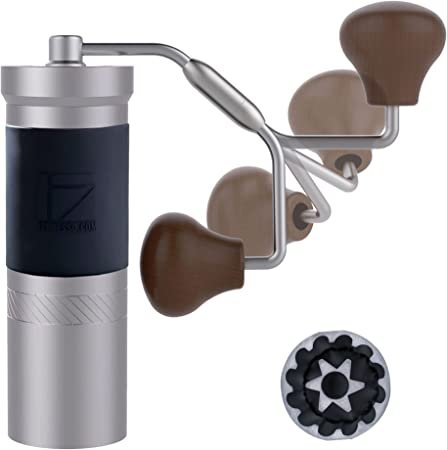The moka pot is a popular stovetop coffee maker known for its ability to brew rich and flavorful coffee.
With its distinctive three-chamber design, it offers a unique and enjoyable coffee brewing experience.
Using the moka pot involves the application of heat, which creates pressure and forces water through finely ground coffee, resulting in a strong and aromatic brew.
There are several benefits to using a moka pot. It is cost-effective, portable, and easy to use, making it a convenient choice for coffee enthusiasts. The brewing process in a moka pot is relatively quick, and the end result is a bold and satisfying cup of coffee.
Types of metals used in Moka Pots and its effect on taste
Aluminum moka pots:
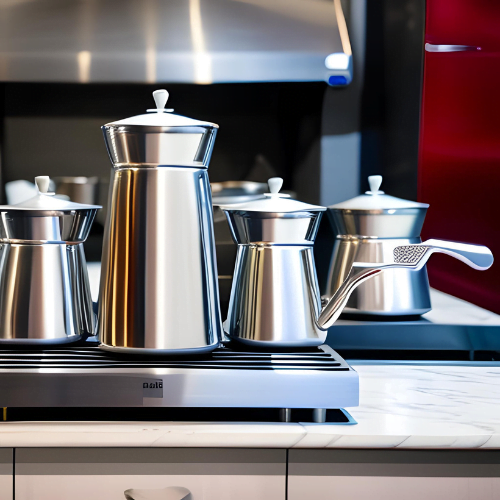
Aluminum moka pots are the most common and traditional type. They are lightweight, affordable, and conduct heat efficiently. However, they can impart a metallic taste to the coffee if not properly maintained.
Stainless steel moka pots:

Stainless steel moka pots offer durability and longevity. They are resistant to rust and do not affect the taste of the coffee. Additionally, they are easy to clean and maintain, making them a popular choice among coffee enthusiasts.
Other material options and their effects on taste:
Besides aluminum and stainless steel, moka pots are also available in materials such as copper and titanium.
- Copper moka pots provide excellent heat conductivity but can react with certain coffee acids, altering the taste.
- Titanium moka pots are lightweight and corrosion-resistant but may be more expensive.
The choice of material for a moka pot depends on personal preference and desired coffee flavor. It’s essential to consider factors like heat conductivity, durability, maintenance, and potential taste interactions when selecting a moka pot.
Choosing the Right Size Moka Pot
Factors to consider when selecting the size:
- Brewing Quantity: Determine how many cups of coffee you typically brew at a time. Moka pots are available in various sizes, ranging from 1-cup to 12-cup capacities.
- Serving Size: Consider the serving size you prefer. If you enjoy larger servings or want to share coffee with others, opt for a larger moka pot. For individuals or smaller servings, a smaller size would be suitable.
- Storage Space: Take into account the available storage space in your kitchen. Moka pots come in different dimensions, so ensure that the chosen size fits comfortably in your cabinets.
Common sizes available in the market:
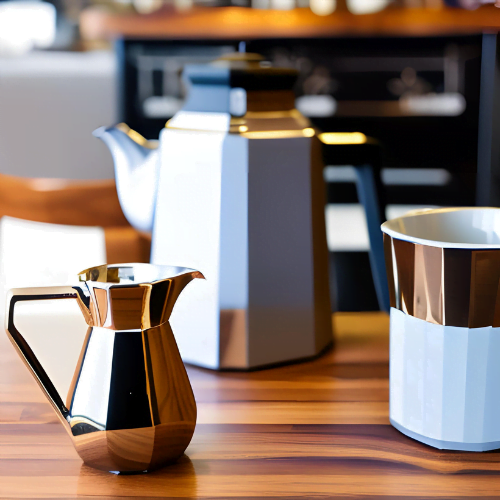
- 1-Cup: Ideal for single servings or if you have limited storage space.
- 3-Cup: Suitable for 1-2 people, producing about 6 ounces of coffee.
- 6-Cup: A popular size for small households, making approximately 12 ounces of coffee.
- 9-Cup: Designed for larger groups or coffee enthusiasts who prefer more substantial servings. It yields around 18 ounces of coffee.
- 12-Cup: The largest size available, perfect for entertaining or commercial use. It can brew approximately 24 ounces of coffee.
Choosing the right size moka pot ensures that you have the appropriate capacity for your brewing needs. Consider the factors mentioned above to select a size that suits your preferences and lifestyle. Whether you prefer a single cup or need a larger pot for gatherings, there is a size available to meet your requirements.
Selection of Ingredients and there effects on taste
Water quality and its impact on taste:
The quality of water used in brewing coffee has a significant impact on its taste. Impurities like chlorine or minerals can affect the flavor. Use filtered or bottled water for the best results.
Coffee selection and grind size:
The type and quality of coffee beans, as well as the grind size, greatly influence the taste of your brew. Experiment with different beans and find the one that suits your preferences. Adjust the grind size based on the brewing method.
Note: Typically best grind size for a moka pot is medium-fine
Water-to-coffee ratio and its effects on taste:
The ratio of water to coffee grounds is crucial in determining the strength and flavor of your coffee. A general guideline is to use 1 to 2 tablespoons of coffee per 6 ounces of water. Adjust the ratio to your liking, whether you prefer a stronger or milder brew.
When brewing coffee, the water quality plays a significant role. Impurities like chlorine or minerals can alter the flavor, so opt for filtered or bottled water.
Brewing Coffee Step-by-Step in Moka pot
1. Preparing the moka pot:
- Disassembling and cleaning the moka pot: Take apart the moka pot, separating the bottom chamber, filter basket, and upper chamber. Clean each component with warm water and a mild detergent. Rinse thoroughly to remove any soap residue.
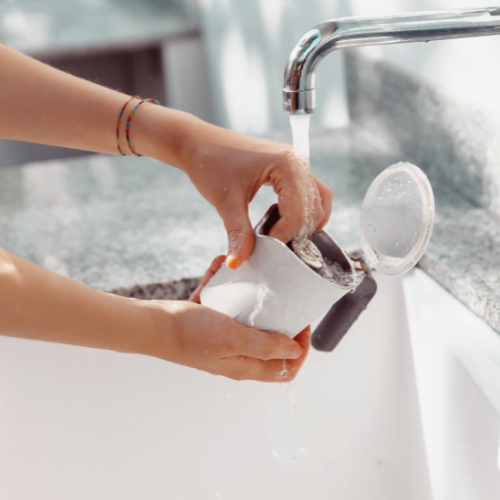
- Filling the bottom chamber with hot water: Fill the bottom chamber of the moka pot with hot water up to just below the pressure release valve. This preheats the pot and helps create the necessary pressure for brewing.
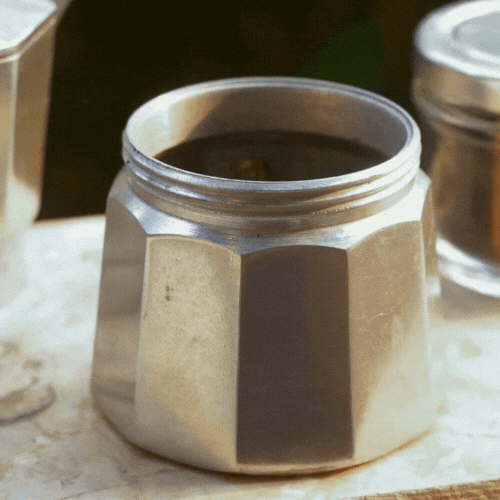
2. Assembling the moka pot:
- Placing the filter basket and filling it with coffee grounds: Insert the filter basket into the bottom chamber. Fill the basket with finely ground coffee, distributing it evenly without overpacking. Level the grounds with a gentle shake.
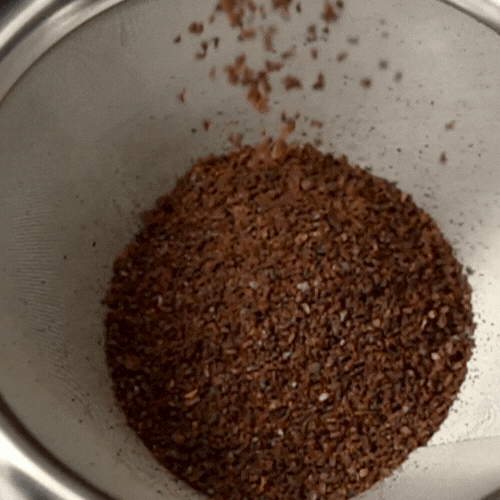
- Screwing the upper chamber onto the bottom chamber: Carefully align the upper chamber with the bottom chamber, ensuring a tight fit. Use oven mitts or a towel to protect your hands from the heat. Avoid over-tightening, as it may make it difficult to separate the chambers later.
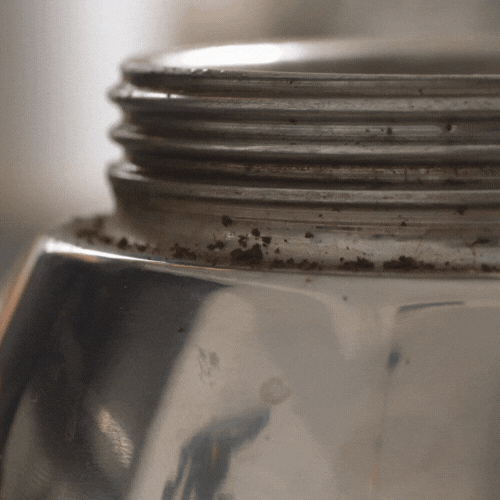
3. Brewing the coffee:
- Placing the moka pot on a heat source: Set the assembled moka pot on a stove burner or heat source at medium heat. Position the handle away from the heat source to prevent burns.
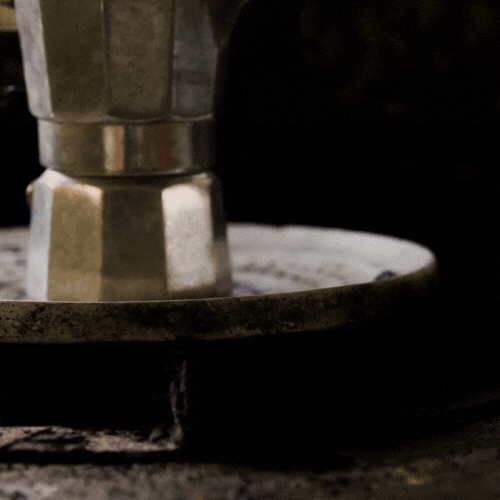
- Monitoring the brew time and water temperature: Keep an eye on the brewing process. As the water heats, it will rise through the filter basket, extracting the coffee flavors. Adjust the heat if necessary to maintain a steady, gentle boil. The entire brewing process typically takes 4-5 minutes.
4. Extracting the brewed coffee:

- Removing the moka pot from the heat source: Once the upper chamber is filled with brewed coffee and the gurgling sound is heard, remove the moka pot from the heat source promptly to avoid over-extraction and a burnt taste.
- Opening the lid and pouring the brewed coffee: Use oven mitts or a towel to hold the bottom chamber, as it may still be hot. Open the lid of the moka pot, then carefully pour the brewed coffee into your cup or serving vessel. Enjoy your freshly brewed moka pot coffee immediately.
Troubleshooting for Better Results
When troubleshooting your moka pot for better results, it’s important to address common issues and apply suitable solutions.
- Weak or bitter coffee: Weak coffee may result from using too coarse of a grind or a low coffee-to-water ratio. Adjust the grind to medium-fine and increase the amount of coffee used. Bitterness can be caused by over-extraction or using a fine grind. Shorten the brew time and use a slightly coarser grind.
- Coffee grounds in the brewed coffee: If you find coffee grounds in your brewed coffee, it could be due to using too fine of a grind or overfilling the filter basket. Use a slightly coarser grind and ensure the coffee grounds are level and not packed tightly in the filter basket.
- Safety valve issues: Sometimes the safety valve in the moka pot may get clogged or not function properly. Ensure the valve is clean and clear of any debris. If necessary, disassemble the moka pot and clean the safety valve thoroughly. Additionally, make sure the valve is properly aligned and tightened when assembling the moka pot.
Tips for Better Results
Preheating the water for better extraction:
Preheating the water used in your moka pot can enhance extraction.
Fill the bottom chamber with hot water before assembling the pot.
This helps maintain consistent brewing temperature and ensures optimal extraction of flavors from the coffee grounds.
Adjusting water temperature for desired taste:
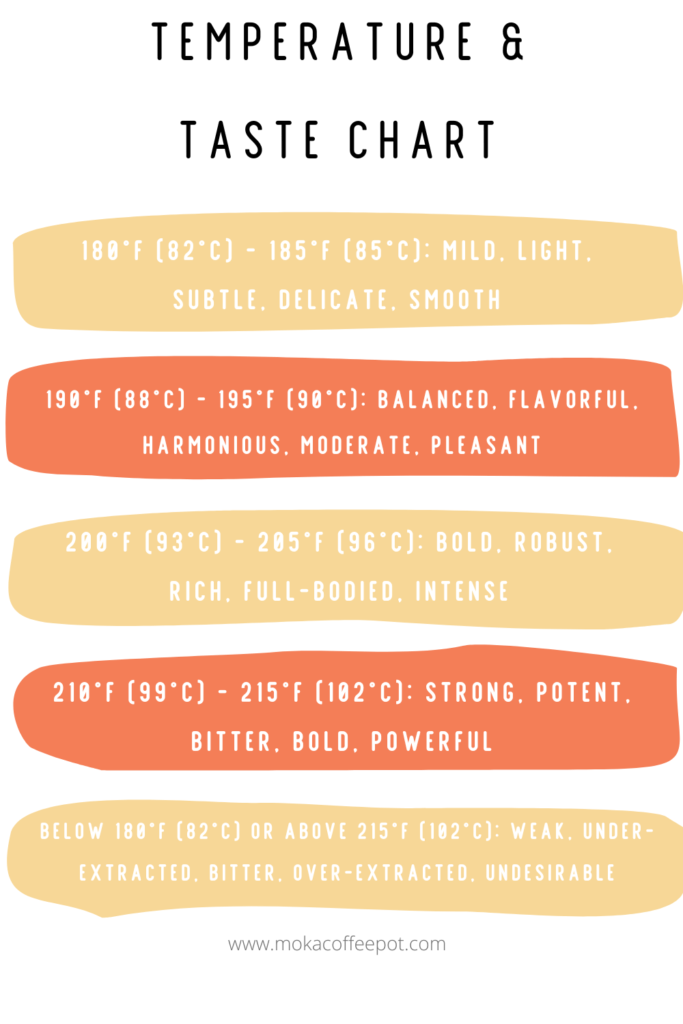
Water temperature plays a crucial role in the taste of your brewed coffee.
For a milder flavor, use slightly cooler water around 190°F (88°C).
If you prefer a bolder and stronger taste, use hotter water around 200-205°F (93-96°C). Experiment with different temperatures to find your desired flavor profile.
Experimenting with brew times for different strengths:
The brew time influences the strength of your coffee. A shorter brew time will yield a milder cup, while a longer brew time will result in a stronger and more concentrated brew. Adjust the heat intensity to control the brew time and experiment to find the perfect balance for your preferred strength.
Using fine coffee grounds for an espresso-like coffee:

If you desire an espresso-like coffee from your moka pot, use a fine grind size. Finely ground coffee allows for increased extraction and produces a stronger and more robust flavor profile. However, be cautious not to grind too fine, as it can clog the filter and impede the brewing process.
By preheating the water, adjusting water temperature, experimenting with brew times, and using fine coffee grounds, you can enhance the flavor and overall results of your moka pot brewing. These tips provide valuable insights for achieving a customized and enjoyable coffee experience.
Brewing on Induction Stove
Advantages and considerations of using a moka pot on an induction stove:
Using a moka pot on an induction stove offers several advantages. Induction stoves provide precise temperature control, which is crucial for moka pot brewing. They heat up quickly and maintain consistent heat throughout the brewing process, resulting in a more reliable extraction. Induction stoves are also energy-efficient and safe to use.
However, there are a few considerations when using a moka pot on an induction stove. Ensure that the moka pot is compatible with induction cooktops.
Look for a moka pot made with magnetic materials like stainless steel or aluminum with an induction-compatible base. Additionally, handle the moka pot with oven mitts or a towel, as the handle can become hot during brewing.
Specific instructions for brewing on an induction stove:
- Place the moka pot on the induction cooktop and ensure it is centered properly.
- Set the induction stove to medium heat or adjust based on your stove’s specific temperature settings.
- Monitor the brew time and water temperature closely. Adjust the heat as needed to maintain a gentle boil and proper extraction.
- Once the upper chamber is filled with brewed coffee, remove the moka pot from the heat source promptly.
- Allow the moka pot to cool for a few minutes before opening the lid and pouring the coffee.
By following these instructions, you can effectively brew coffee using a moka pot on an induction stove. Take advantage of the precise temperature control and enjoy a delicious cup of coffee with the convenience and efficiency of an induction stove.
How to use a non induction moka pot on a induction/electric based stove using an induction hob?
Using a non-induction moka pot on an induction-based stove requires an induction hob converter disc. Here’s how you can use a non-induction moka pot on an induction stove using an induction hob converter disc:
- Place the induction hob converter disc on the induction stove’s heat rings/burner. Ensure that the disc is centered and properly positioned.
- Put your non-induction moka pot on top of the converter disc. The disc will act as a bridge between the moka pot and the induction stove, allowing heat transfer.
- Set the induction stove to the desired heat level for brewing coffee. Follow the manufacturer’s instructions for the specific heat settings and recommendations.
- Monitor the brew time and water temperature closely. Adjust the heat as necessary to maintain the proper brewing conditions.
- Once the upper chamber of the moka pot is filled with brewed coffee, remove the moka pot from the heat source.
- Allow the moka pot to cool for a few minutes before opening the lid and pouring the coffee.
Here is our recommendation for an induction hob/plate/heat diffuser
By using an induction hob converter disc, you can adapt a non-induction moka pot for use on an induction stove. Ensure that the converter disc is compatible with your moka pot and follow the provided instructions for proper usage. This method allows you to enjoy the convenience of an induction stove while using your existing non-induction moka pot.
Cleaning and Maintenance
Proper cleaning techniques for the moka pot:
To ensure optimal performance and longevity of your moka pot, it is essential to clean it properly. Here are some techniques for cleaning the moka pot:
- Disassemble the moka pot by separating the bottom chamber, filter basket, and upper chamber.
- Rinse each component with warm water immediately after use. Avoid using soap, as it can leave residue and affect the taste of your coffee.
- Use a brush or a soft cloth to remove any coffee residue or buildup from the filter basket and the inside of the chambers.
- For stubborn stains, you can create a mixture of water and vinegar or use specialized coffee pot cleaning solutions. Follow the instructions provided by the cleaning product.
- Thoroughly rinse all components after cleaning to remove any cleaning agents.
Handling and storing the moka pot:
Proper handling and storage of the moka pot contribute to its longevity and performance. Here are some tips:
- When handling the moka pot, use oven mitts or a towel to protect your hands from the heat.
- Avoid using excessive force when screwing or unscrewing the chambers to prevent damage.
- After cleaning and drying the moka pot, reassemble it and store it in a dry place to prevent moisture buildup.
- Ensure that the moka pot is completely dry before storing to prevent the growth of mold or mildew.
- Avoid storing the moka pot with the chambers tightly screwed together, as this can cause the gasket to compress and lose its effectiveness.
By following these cleaning and maintenance practices, you can keep your moka pot in excellent condition, ensuring a consistently delicious cup of coffee and prolonging its lifespan.
Recommendations for Beginners
Best moka pots for beginners:
For beginners looking to dive into the world of moka pot brewing, here are some highly recommended options:
Bialetti Induction Moka pot : This iconic moka pot is known for its quality and reliability. It comes in various sizes and is easy to use, making it a popular choice for beginners.
Bialetti Stovetop Moka pot : This stove top moka pot is known for its quality and quantity. It comes in various shapes/sizes and it very easy to brew coffee, making it a popular choice for beginners/intermediate level brewers.
Tips for first-time moka pot users:
If you’re new to using a moka pot, here are some tips to help you get started:
- Read the instructions: Familiarize yourself with the manufacturer’s instructions for your specific moka pot model. Understanding the assembly, brewing, and cleaning process is crucial.
- Use freshly roasted coffee: Opt for freshly roasted coffee beans and grind them just before brewing. This ensures maximum flavor and aroma in your cup of coffee.
- Start with medium heat: Use a medium heat setting on your stove when brewing with a moka pot. This helps maintain a balanced extraction without rushing or overheating the process.
- Experiment with grind size and coffee-to-water ratio: Adjust the grind size and coffee-to-water ratio to find your preferred taste and strength. Experimentation will help you refine your brewing technique.
- Practice and observe: Pay attention to the brewing process, brew time, and the flavor of your coffee. With practice, you’ll develop a better understanding of your moka pot’s nuances and how to achieve the desired results.
By selecting a suitable moka pot for beginners and following these tips, you’ll be on your way to brewing delicious coffee and enjoying the unique moka pot experience.
Accessories for Efficient and Tasty Coffee Making
Coffee grinder recommendations:
Investing in a good coffee grinder is essential for achieving optimal flavor and consistency. Here are some recommended coffee grinders:
1Zpresso: This entry-level burr grinder offers excellent grind quality and consistency. It has a wide range of grind settings, making it suitable for various brewing methods, including moka pot.
Digital scale recommendations:
Using a digital scale helps ensure accurate coffee-to-water ratios and consistent results. Here are some recommended digital scales:
- Hario V60 Drip Scale: This scale is specifically designed for pour-over brewing and offers precise measurements. It has a built-in timer and a compact size, making it convenient for home use.
- Acaia Pearl: Known for its precision and sleek design, the Acaia Pearl is a popular choice among coffee enthusiasts. It has advanced features such as Bluetooth connectivity and a mobile app.
- OXO Good Grips Coffee Scale: This scale is user-friendly and offers a large display for easy reading. It has a built-in timer and is suitable for various brewing methods.
Tamper recommendations:
A good tamper helps ensure an even and consistent tamp for your coffee grounds. Here are some recommended tampers:
- Rattleware Round Handle Tamper: This tamper has a comfortable grip and a flat base for even tamping. It is available in different sizes to match your moka pot’s filter basket.
- Espro Calibrated Tamper: Known for its precision, the Espro Calibrated Tamper features an adjustable pressure setting. This allows for consistent tamping every time, ensuring optimal extraction.
- Cafelat Tamper: The Cafelat Tamper offers a variety of designs and materials, catering to different preferences. It has a solid build and provides a comfortable grip.
Investing in quality accessories like a coffee grinder, digital scale, and tamper can greatly enhance your coffee-making process. They contribute to consistent and delicious results, allowing you to enjoy the full potential of your moka pot brewing experience.
FAQ
Yes, you can use a moka pot on an electric stove. Just ensure the moka pot’s base is compatible with the electric coil or glass cooktop.
The ideal water-to-coffee ratio for a moka pot is typically 1:7 or 1:8, meaning 1 part coffee to 7 or 8 parts water. However, you can adjust it to suit your personal taste preferences.
Yes, an alternative method for cleaning a moka pot is using a mixture of baking soda and water. This can help remove stubborn stains or residue from the pot.
While it is recommended to use freshly ground coffee for the best flavor, you can use pre-ground coffee in a moka pot. Just ensure the grind size matches the brewing method and adjust the coffee-to-water ratio if needed.
Preheating the water is not necessary for a moka pot. Adding hot water to the bottom chamber before brewing is sufficient, as the brewing process will heat the water to the appropriate temperature.
Yes, a moka pot can be used as the base for other coffee-based drinks. You can brew a concentrated coffee with the moka pot and then dilute it with milk or use it as a base for frothed milk in lattes or cappuccinos.
Conclusion – How to Make Coffee in a Moka Pot? | Moka Pot Brewing Guide 101
Throughout this guide, we have covered various aspects of brewing coffee in a moka pot. We explored topics such as selecting the right moka pot, grinding coffee to the appropriate size, and understanding the water-to-coffee ratio. Today we have delved into the step-by-step brewing process, troubleshooting common issues, and shared tips for better results. We also discussed cleaning and maintenance, recommended accessories, and provided guidance for using a moka pot on different stovetops.
Now equipped with knowledge and insights, we encourage you to embark on your moka pot brewing journey. The moka pot offers a unique and satisfying way to brew coffee, with its strong, concentrated flavor and aroma. By experimenting with different variables, such as grind size, coffee-to-water ratio, and brew time, you can customize your coffee to suit your taste preferences.
Brewing coffee in a moka pot is a delightful ritual that allows you to engage all your senses and immerse yourself in the art of coffee making. It offers a balance between convenience and craftsmanship, providing a rich and robust cup of coffee. Remember to savor each step of the process, from preparing the moka pot to pouring the brewed coffee. With practice and exploration, you will refine your technique and discover your perfect cup of moka pot coffee.
Embrace the joy of brewing coffee in a moka pot, and may each sip be a moment of pleasure and indulgence. Happy brewing!

